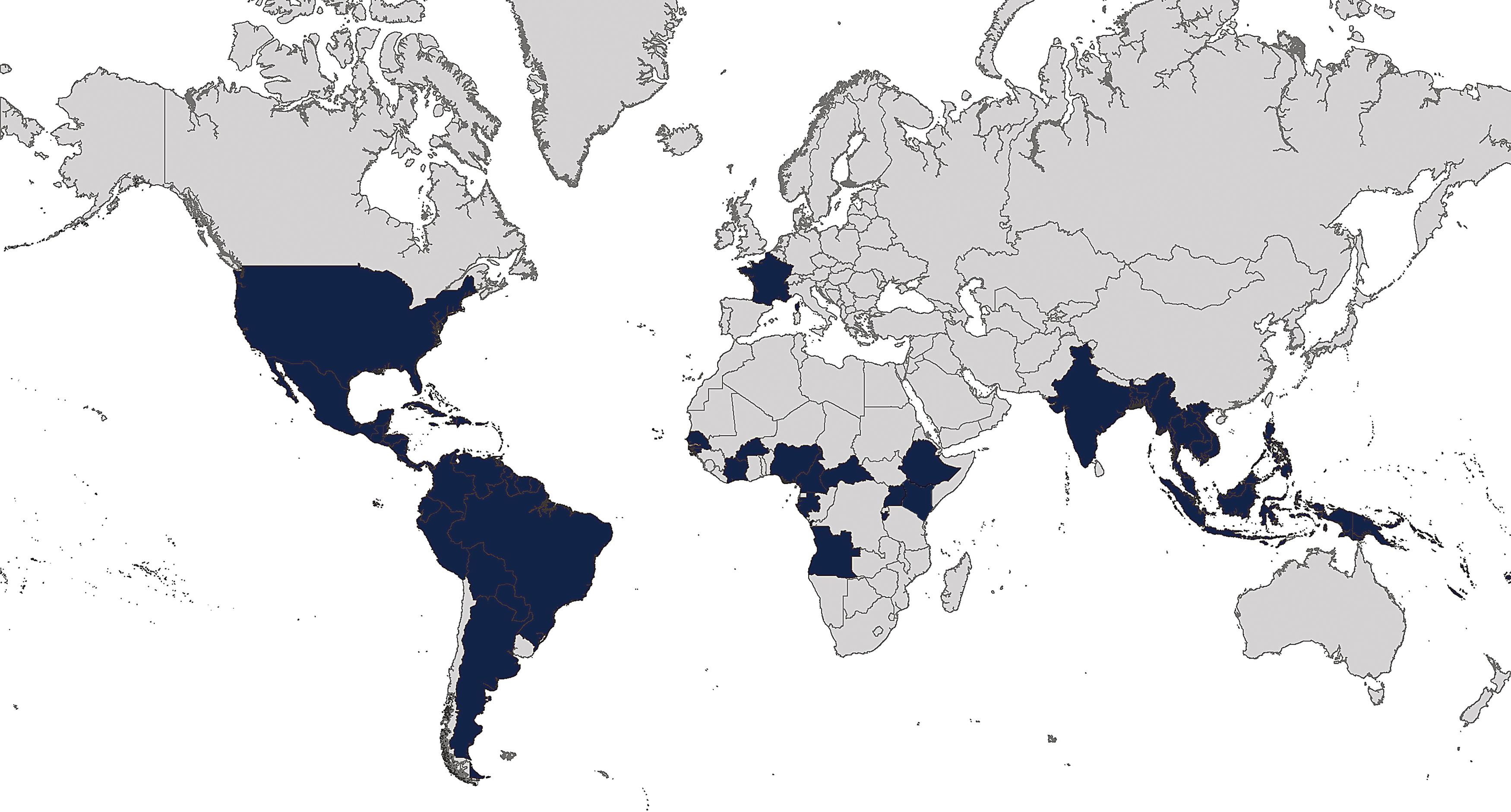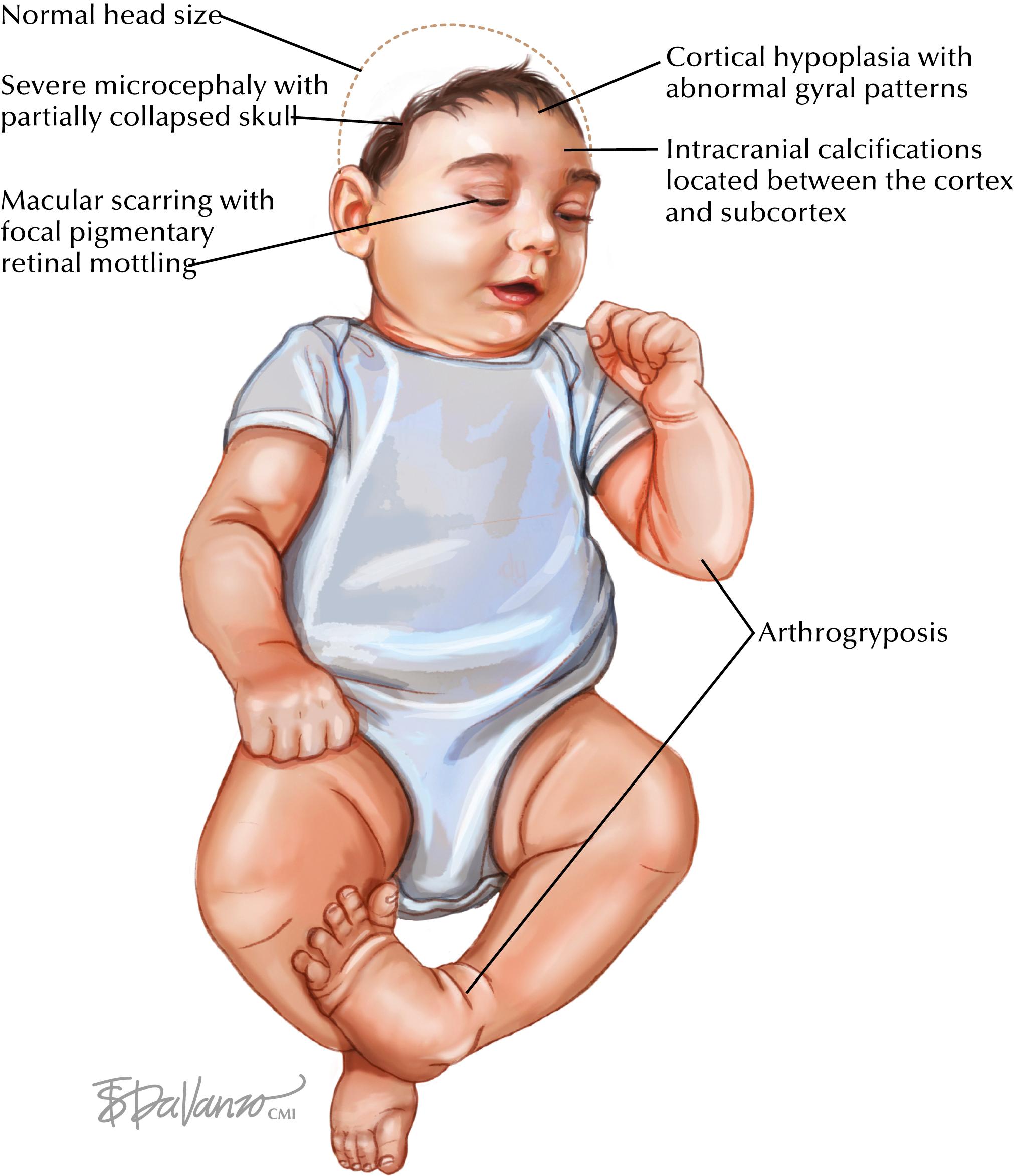Physical Address
304 North Cardinal St.
Dorchester Center, MA 02124
Zika virus (ZIKV) is a flavivirus primarily transmitted to humans by mosquitoes, mainly Aedes aegypti . Other commonly recognized transmission modes include sexual and intrauterine transmission. Following recognition of ZIKV transmission in Africa and Asia during the 1900s, outbreaks subsequently occurred in Pacific Island nations from 2007 and the Americas from 2015. Incidence subsequently declined, but available information suggests probable low-level ongoing transmission in parts of Africa, Asia, and the Americas with rare localized outbreaks. Most infections are asymptomatic or cause mild symptoms, with rash, fever, arthralgia, and/or conjunctival hyperemia commonly reported. Although severe disease is rare, Guillain-Barré syndrome (GBS) and other neurologic and ophthalmologic presentations have been reported. Congenital ZIKV infection can result in a variety of neonatal outcomes, ranging from asymptomatic infection to a severe and distinct pattern of anomalies. Among infants with severe outcomes, clinical findings most specific for congenital ZIKV infection include severe microcephaly with partially collapsed skull, cortical hypoplasia with abnormal gyral patterns, intracranial calcifications located between the cortex and subcortex, macular scarring with focal pigmentary retinal mottling, and arthrogryposis. Management of uncomplicated disease in adults and children is supportive. Pregnant women with laboratory evidence of possible infection should be monitored for adverse pregnancy outcomes. Infants with findings consistent with congenital ZIKV infection or born to mothers with laboratory evidence of possible ZIKV infection during pregnancy should have, in addition to standard evaluation, a head ultrasound and comprehensive ophthalmologic exam. No vaccine is available, and prevention relies on the avoidance of mosquito bites and sexual transmission of ZIKV.
A 34-year-old woman presented to the emergency room in active labor at 38 weeks and 6 days of gestation. She had recently emigrated to the United States from Brazil, where she had received prior prenatal care. Early in her pregnancy she experienced a mild illness with rash and low-grade fever for which she did not seek medical care. Her last ultrasound, performed at 30 weeks’ gestation, showed evidence of microcephaly and ventriculomegaly. She delivered her male infant by spontaneous vaginal delivery. He was born with Apgar scores of 7 and 9 at 1 and 5 minutes, respectively. Initial head circumference measurements were below the third percentile for sex and gestational age. Repeat head circumference measurements confirmed microcephaly. Weight and length were measured at the 25th and 10th percentiles, respectively. On examination, the infant was noted to have a small, irregularly shaped head and multiple contractures of both upper and lower extremities bilaterally. A head ultrasound was performed and revealed microcephaly, multiple subcortical calcifications, and ventriculomegaly. In addition, magnetic resonance imaging revealed polymicrogyria of the left frontal region and bilaterally in the temporal lobes. Given the maternal history and clinical findings in the infant consistent with congenital ZIKV infection, laboratory testing was performed. The infant’s serum and urine were negative for ZIKV ribonucleic acid (RNA) by reverse transcription–polymerase chain reaction (RT-PCR) testing, but serum was positive for ZIKV IgM, with a ZIKV plaque reduction neutralization test (PRNT) titer of 1:1280 and dengue virus (DENV) PRNT titer of 1:20. Further evaluation included an ophthalmology exam that revealed left optic nerve atrophy. The infant passes an automated auditory brain-stem response hearing test. Based on clinical findings and laboratory test results, the infant was determined to have probable congenital ZIKV infection. The infant was referred to multiple specialists including neurology, ophthalmology, orthopedics, and early intervention services for further evaluation and management.
ZIKV is a flavivirus in the family Flaviviridae . It is a single-stranded RNA virus related antigenically to dengue, yellow fever, Japanese encephalitis, West Nile, and St. Louis encephalitis viruses. There are two major ZIKV lineages, African and Asian.
Although infection with ZIKV most often results in asymptomatic infection or a mild systemic illness, in pregnant women ZIKV can cross the placenta, resulting in vertical transmission of the virus from the pregnant woman to her fetus. ZIKV is neurotropic in the fetus and causes direct damage to the developing brain. Severe structural brain abnormalities with intracranial volume loss can occur, resulting in collapse of the developing skull with overlapping cranial sutures, occipital bone prominence, and redundant scalp skin, a phenotype known as fetal brain disruption sequence.
ZIKV transmission among humans primarily involves a human-mosquito-human transmission cycle. The main vectors are Aedes (Stegomyia) spp. mosquitoes, primarily Ae. aegypti . These mosquitoes also are key vectors involved in the transmission of dengue, chikungunya, and yellow fever viruses. Another important mode of transmission is through the intrauterine route, which can result in congenital ZIKV infection. This can occur in any trimester of pregnancy, but the risk for severe outcomes is greatest when infection occurs during the first trimester. Sexual transmission is also well recognized, with male-to-female, male-to-male, and female-to-male sexual transmission having been documented. There are rare reports of laboratory-associated and intrapartum transmission, of probable transmission through platelet transfusion, and of possible transmission through breast feeding. One likely case of person-to-person transmission with an unknown transmission mode has been reported. The index patient had a uniquely high viral load, estimated to be about 100,000 times the normal level, and ultimately died. The case patient reported casual contact such as hugging and kissing the index patient and assisted hospital personnel in moving the patient after toileting but did not have direct contact with body fluids. Based on the transmission of other arboviruses through organ and tissue transplantation, transmission of ZIKV through these routes is theoretically possible but has not been reported.
ZIKV was first isolated in 1947 from a monkey in the Zika Forest in Uganda. For 60 years thereafter, only small numbers of human cases were identified in Africa and Asia. In 2007, a ZIKV disease outbreak was recognized in the Federated States of Micronesia, followed by an outbreak in 2013 in French Polynesia, with subsequent spread to other Pacific islands. Transmission was first recognized in the Americas in 2015 in Brazil, although retrospective analyses suggested earlier circulation of the virus in the region. Transmission was subsequently reported from much of South America, Central America, the Caribbean, and parts of North America ( Fig. 92.1 ). In the continental United States, this included identified local transmission in Florida and southern Texas. The ZIKV outbreak in the Americas peaked during the first half of 2016, and incidence subsequently declined substantially. Although accurate and up-to-date epidemiologic data on ZIKV are limited, available information suggests probable ongoing low-level transmission in parts of Africa, Asia, and the Americas, with rare localized outbreaks. Transmission has likely been interrupted in some countries where ZIKV transmission had been recognized in the past, particularly geographically isolated places with small populations (e.g., small island nations). However, in areas with the appropriate vector, the potential for reemergence or reintroduction exists. As of 2020, transmission levels of DENV, which produces a clinically similar disease, are now far higher than levels of ZIKV in most areas.

Most ZIKV infections are asymptomatic or cause mild symptoms. For persons who develop symptomatic illness, the incubation period is 3 to 14 days. Common symptoms are rash (which may be pruritic), fever, arthralgia, conjunctival hyperemia, myalgia, and headache. Other reported symptoms include lethargy, vomiting, retro-orbital pain, lymphadenopathy, and edema of the extremities. Clinical illness typically resolves within a week. Severe disease requiring hospitalization and death following ZIKV infection are rare. The most commonly reported complication is GBS, with onset in most cases 5 to 10 days after the viral prodrome. Other neurologic or ophthalmologic presentations (e.g., meningoencephalitis, myelitis, acute maculopathy, uveitis) have occasionally been reported. Pregnant women have similar clinical presentations to nonpregnant persons, but when intrauterine transmission occurs, adverse pregnancy outcomes can include fetal loss or birth defects. Laboratory parameters in cases of ZIKV disease are most often normal, but reported abnormalities include leukopenia and elevated hepatic transaminases. In addition, ZIKV infection has been associated with severe thrombocytopenia, which can cause hemorrhage and death.
Congenital ZIKV infection has been associated with a variety of neonatal outcomes, ranging from asymptomatic infection to a severe and distinct pattern of anomalies that has been referred to as congenital Zika syndrome. The clinical features most specific for congenital ZIKV infection include the following ( Fig. 92.2 ):
Severe microcephaly with partially collapsed skull
Cortical hypoplasia with abnormal gyral patterns
Intracranial calcifications located between the cortex and subcortex
Macular scarring with focal pigmentary retinal mottling
Congenital contractures of major joints (arthrogryposis) associated with structural brain anomalies

However, the full spectrum of the associated phenotype, in particular the milder end of the spectrum, has not been well defined. Additional structural brain findings associated with congenital ZIKV infection include ventriculomegaly, corpus callosum agenesis, cerebellar hypoplasia, mild microcephaly, and postnatal-onset microcephaly ( Box 92.1 ). Ophthalmologic findings include microphthalmia, cataracts, chorioretinal atrophy, and optic nerve hypoplasia. Neurologic sequelae likely associated with congenital ZIKV infection include hypertonia, dystonia, tremors, swallowing dysfunction, intellectual disability, sensorineural hearing loss, and visual impairment. Although surveillance and research studies have investigated the frequency of ZIKV-associated birth defects and neurodevelopmental abnormalities, differences in study approaches; laboratory definitions of ZIKV infection; the birth defects considered possibly, probably or definitely related; comprehensiveness and period of follow-up; and other factors make these rates hard to quantify. Efforts are ongoing to clarify the full spectrum of sequelae associated with ZIKV exposure in utero, including long-term neurodevelopmental outcomes.
Become a Clinical Tree membership for Full access and enjoy Unlimited articles
If you are a member. Log in here